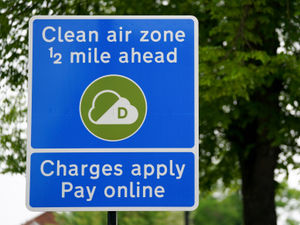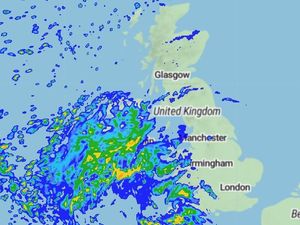Air quality is better due to Birmingham Clean Air Zone - report
There is a “clear indication” Birmingham’s Clean Air Zone is improving air quality in the city centre, the city’s transport and environment chief has said.

Birmingham City Council has published a report which shares results from the first six months of the CAZ since launch in June last year.
It shows nitrogen dioxide (NO2) – an air pollutant the CAZ aims to tackle – reduced by an average of 13 per cent between 2019 and 2021 within the CAZ.
The council has a responsibility to ensure annual mean NO2 levels are brought below 40 micrograms per cubic metre (µg/m3).
In 15 out of 16 diffusion tube measurement points in the city centre in 2016 this value was exceeded, but in 2021 only nine out of 42 measurement points were above 40 µg/m3.
The report states there does not appear to have been a displacement of traffic from the city centre to the ring road – which sits on the edge of the charging zone but is not included.
There was a 14 per cent reduction on average at the ring road taking into account the diffusion tube locations where measurements were taken, as well as an average improvement of 13 per cent in the wider city.
The greatest improvement of all was seen at Moseley Road on the ring road which reduced by 46 per cent from 41.3 µg/m3 to 22.2 µg/m3 between 2019 and 2021.
The report states during the first lockdown in March 2020 – more than a year before the zone was launched – road traffic dropped to one sixth of the levels compared to pre-Covid.
This appears to be be reflected in the pollution readings for 2020 – which indicate in many cases greater reductions when compared to 2019 levels than 2021, the year the zone was introduced.
The rate of vehicles entering the zone which were compliant and not subject to an £8 or £50 charge has increased from 79.8 per cent at the beginning of June to 88.8 per cent at the end of December.
And there does not appear to have been a reduction in compliant vehicles entering the zone, “meaning that compliant vehicles have not been dissuaded from the Clean Air Zone”, the report states.
Councillor Waseem Zaffar, cabinet member for transport and environment, said: “These results are a really clear indication that the Clean Air Zone is starting to improve air quality in the centre of our city.
“It is still very early days for the scheme but if we can maintain this rate of improvement, we are on track to bring the levels of NO2 back within the legal limit.
“We will continue to support individuals and businesses through the transition to becoming a clean air city and I am pleased that we are getting ready to extend the benefits of clean air in the city centre to all parts of Birmingham.
“Our Clean Air Strategy starts to set out a longer-term plan for change, but it is something that the council cannot do on its own. Collaboration with partners will be critical.
“So too is the need for all of us to understand the positive changes we can make every day that help to reduce air pollution.
“We will continue to monitor and publish the data around the operation and impact of the Clean Air Zone. And we will use this data to help shape our longer-term ambitions and policies in this critical area.”
The Clean Air Zone has been introduced to tackle poor air quality in the city, responsible for a reported 900 deaths per year.



